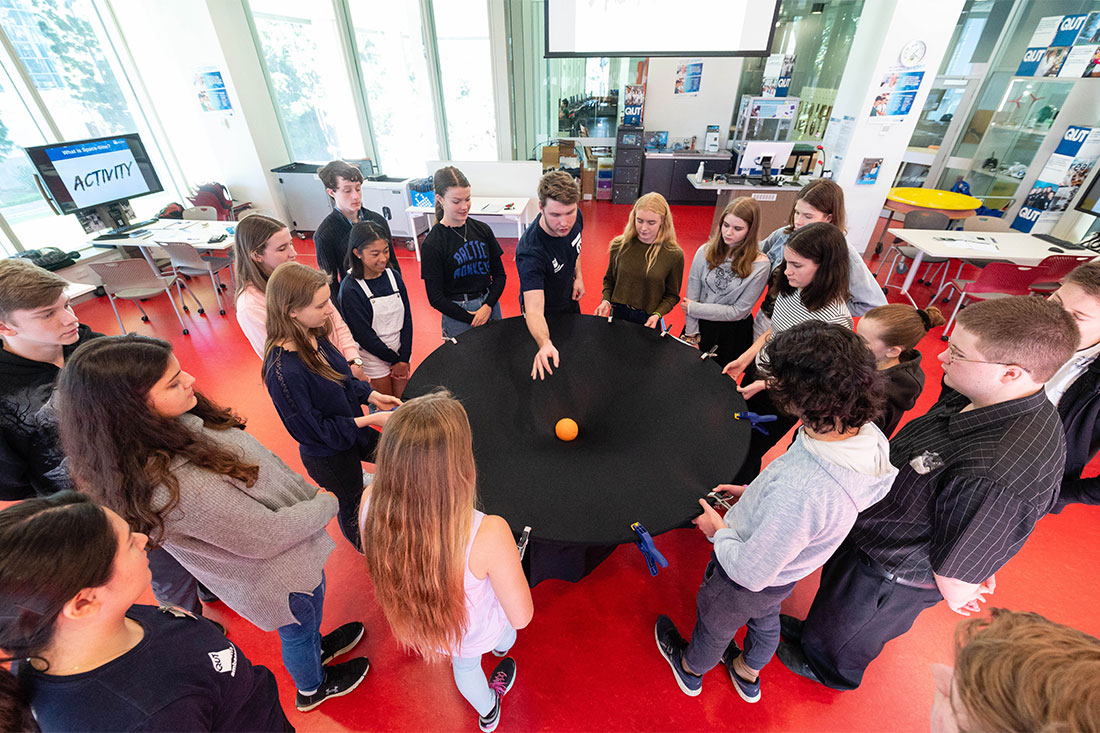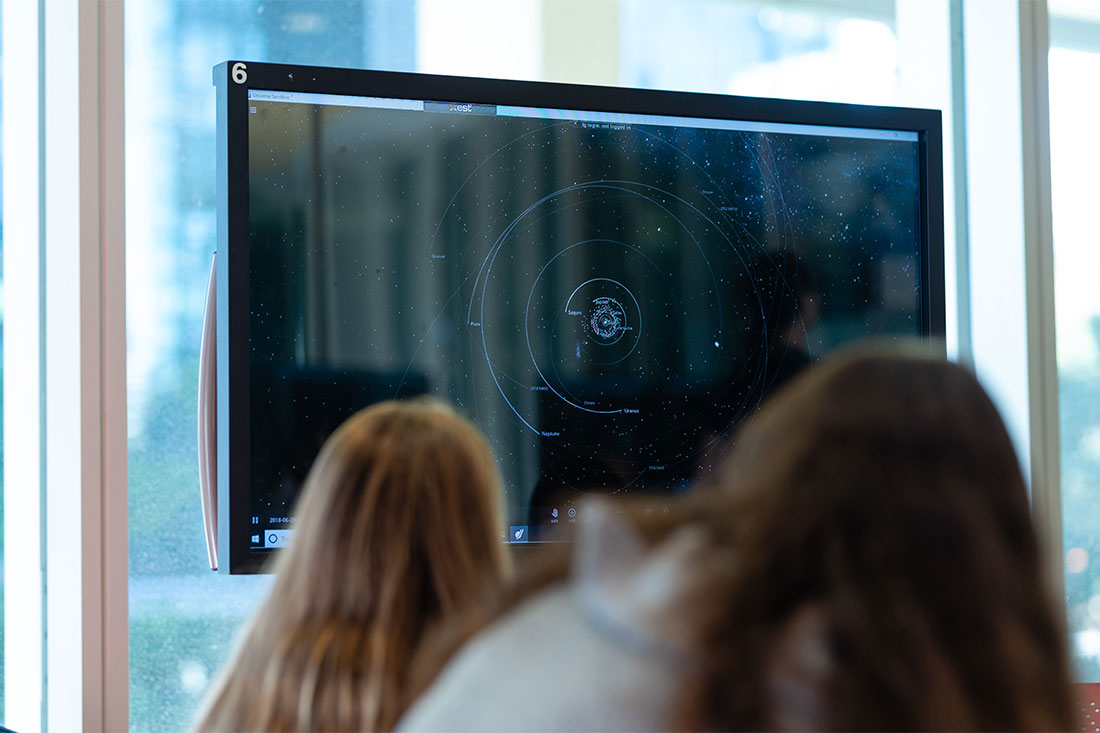Workshop overview
|
Year level
| 9-10, 11-12 (senior version) |
|
Capacity
| 16-32 students. If you want to bring more students, email highschool.workshops@qut.edu.au |
|
When
|
School days: Monday-Friday
|
|
Duration
|
Full day
|
|
Where
|
QUT Gardens Point, Science and Engineering Centre
|
|
Cost
| Free (Late cancellation fees apply. Please see terms and conditions). |
Workshop details
Students are introduced to the concept of Frames of Reference using Einstein’s thought experiment idea; they then learn about how the speed of light breaks the rules, and how this led to Einstein’s Theory of Special Relativity. A light clock demonstration leads to an explanation of time dilation, and senior students use a Relativistic Time Dilation equation to solve some scenarios. The morning session concludes with 30 minutes at The Cube’s Physics Observatory, visiting planets in our solar system, exploring the effects of changing gravity.
In the afternoon students discuss the effects of special relativity in the real world, how it makes time travel a theoretical possibility, and Einstein’s Twin paradox. They discuss Newtonian gravity and how black holes affect space-time, and students use Newton’s second law to calculate gravity.
Einstein’s theory of General Relativity is introduced, using a demonstration to show how the mass of the sun affects orbiting bodies, leading to the concept of space-time, gravitational waves and gravitational lensing. Students then use a simulator program to conduct experiments in the universe, such as changing the mass of the sun, earth and moon, introducing a black hole and creating their own solar system and finish off with a quick quiz.
Topics covered in this workshop:
- physics
- engineering
- junior science.


